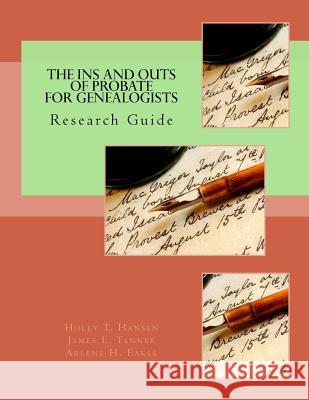The Ins and Outs of Probate for Genealogists: Research Guide » książka
The Ins and Outs of Probate for Genealogists: Research Guide
ISBN-13: 9781515034094 / Angielski / Miękka / 2015 / 172 str.
Probate is a set of court or government procedures established for the orderly transfer of property from a deceased person to his or her heirs and/or assigns. Records kept in the course of a probate action are valuable sources for information for genealogists about the deceased and the deceased's family. As an editorial comment, unfortunately in recent years, probate has become overlaid with so-called "estate planning" which, for all but the very rich, is an excuse for selling either an insurance product or associated services. Since the most ancient times, the motivation for some kind of court or government involvement has been the issue of taxes or other restrictions imposed on the transfer of property occurring at the time of death. At each stage of the probate process, there are records made of the proceedings that have become extremely valuable to genealogical researchers. However, there is a basic limitation to probate: no property, no probate. In addition, probate deals with the concept of individual ownership or rights to property both real and personal so the concept of probate evolves as property laws evolve. In more modern times, this involvement of property laws with probate, tax laws with probate and court procedures with probate all create a huge challenge for genealogists. There is no need for a genealogist to become a legal practitioner, but the jargon and the concepts involved in probate, property law and court procedures are important adjuncts to understanding these areas of research. Therefore the initial challenge for the researcher is learning the probate, property law and court jargon. The first and most important term is the idea of an "estate." In order to have an "estate" the law, at the time, must recognize individual property rights and the ability to alienate or transfer those rights to a spouse or other family members collectively called the deceased person's heirs. This research guide explains the many facets of the Probate process and what to expect when seeking for these types of documents. It also includes fundamentals of research, and reading old style handwriting instructions.
Zawartość książki może nie spełniać oczekiwań – reklamacje nie obejmują treści, która mogła nie być redakcyjnie ani merytorycznie opracowana.











